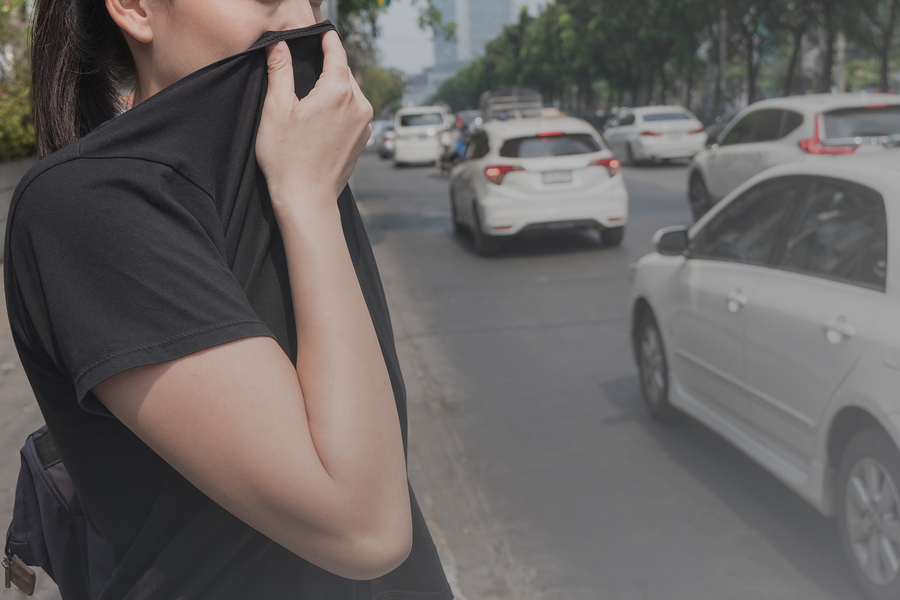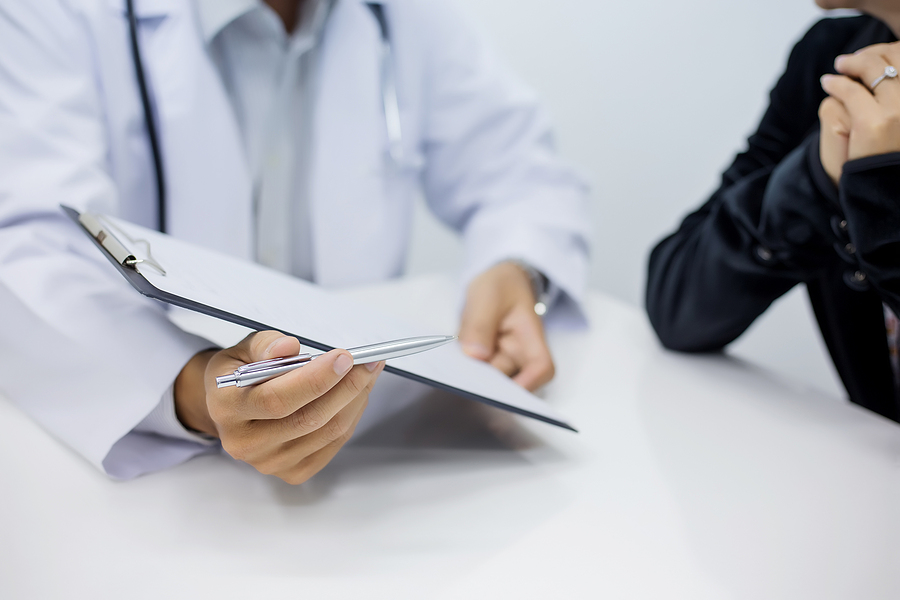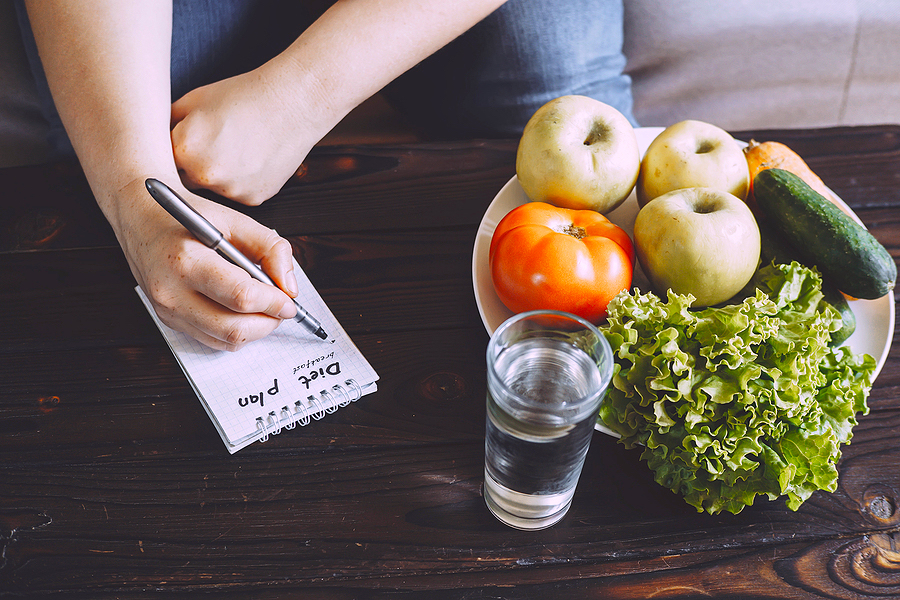I’ve seen a lot of headlines lately about the dangers of vaping and FDA intervention. It’s about time! I’ve known from day one that these electronic alternatives were no better than the cigarettes they replaced. It’s great to see it finally getting national attention.
All the talk got me thinking about just how many toxins we are surrounded by each and every day – and how little most people understand the dangers of environmental pollutants. It doesn’t even matter if you use products like e-cigarettes yourself — just being near them is hazardous to your health.
Let’s talk about the kinds of pollutants we are all exposed to regularly, the effects they can have on your health, and how you can take steps to protect yourself against these environmental toxins that could be robbing you of good health.
What Are Some of the Most Common Environmental Toxins?
Avoiding exposure to environmental toxins is nearly impossible because they are everywhere! Even when you are conscientious about your health, you can’t control what the people around you are doing. And toxins are hiding in so many places that you might not even consider. Unless you isolate yourself completely (and even then you can’t avoid the jet fuel and other pollutants in the air you breathe), you are likely to come into contact with some of these.
Synthetic Scents
We’ve been conditioned to believe that odors should be covered up with heavy scents – but the chemicals used to create these artificial scents might just be making you sick! Have you ever noticed feeling nauseated, dizzy or short of breath when you enter a store thick with heavy fragrance? Or when you get into a car with an air freshener hanging from it’s mirror?
From air fresheners to detergents, perfume to scented candles, we are surrounded by chemical combinations that damage all of your systems, including your immune system.
Cigarettes and Vaping
Like I said in the beginning of this article, the truth about the dangers of vaping are becoming known and efforts are underway to ban e-cigarettes following major headlines about illness and even death resulting from their use.
Not using these products yourself is a great start, but it won’t protect you from the effects entirely. That’s because the smoke or vapor exhaled into the environment permeates the air, and this second hand exposure can also damage your health.
We’ve come so far in recent decades, with smoking cigarettes in public places banned or tightly controlled and in designated areas only. Here in Maine, we even have a statute that prohibits smoking any substance in, on, or within 20 feet of a beach, playground, snack bar, group picnic shelter, business facility, enclosed area, public place or restroom in a state park or state historic site. That’s great news!
Unfortunately, just having the law doesn’t mean all will abide by them, and vaping often isn’t addressed in these bans. Even when the rules are followed, the “designated smoking areas” don’t contain the smoke so if you get too close, you’ll still be exposed.
Heavy Metal Exposure
I doubt there’s anyone who hasn’t heard about the dangers of lead and mercury exposure. But many don’t realize that there could still be lead lingering in your body from the days of leaded gasoline, or mercury hiding in your dental fillings. Toxic heavy metals are also in cookware, tap water, immunizations, and personal care products. Avoiding exposure takes a lot of effort, research, and label reading!
Everyday Household Products
Similarly, the products you use to keep your house or laundry clean could be wreaking havoc on your health. When you touch them, your skin absorbs the chemicals, and when you spray them into the air, you end up breathing the toxic ingredients. And that’s not all — chemicals can be in your food storage, and even your furniture and carpets!
Impact of Environmental Toxins on Health
You might be wondering why I’m making such a big deal of all these chemicals that have been in use for decades. The truth is, we are finally beginning to have some real information on the detrimental impact these chemicals have on our bodies.
Our bodies were not designed to process synthetic chemicals day in and day out. And some people are highly sensitive to specific chemicals that place a huge toxic burden on their bodies. But the impact doesn’t show up until years of exposure, which makes it even harder to recognize.
Although your body has a natural detoxification process, the build-up of chemicals over several years can take it to its breaking point. It’s a lot like your plumbing system, which functions fine until it’s so clogged things back up. This puts a lot of pressure on your system, which eventually shuts down until you address the issue.
Symptoms of exposure to these pollutants can vary widely, and include constipation and weight gain, respiratory difficulty, brain fog, skin issues, unexplained aches and pains in your body, and low energy and fatigue.
Connection Between Environmental Pollutants and Lyme Disease
It’s important to know that environmental pollutants can also play a large role in chronic health conditions and disease. The increase of Lyme disease (particularly in Canada and the Northern part of the US) is a great example. This is very personal to me, as I was recently diagnosed with Lyme myself, after weeks of feeling lousy and KNOWING I was eating right, getting enough sleep, and otherwise caring for myself. Overtaken with exhaustion, and increasingly frustrated at the lack of answers I could find, I began to do my own research.
What I found was interesting. The conventional tests for Lyme often come back negative, and for conventional doctors that is enough to convince them Lyme isn’t the culprit. But in the functional medicine world, we know that initial results aren’t always definitive, and sometimes we have to do a little digging.
I discovered a specialized test that reveals much more information, and is far more accurate than those traditional tests. Most conventional doctors won’t even do the full Western blot test without an initial positive – and those are incorrect almost half the time! I learned through my research that the traditional test comes back negative because very often, the antibodies won’t show up for weeks after infection – and sometimes not until Lyme has been treated!
I’m happy to say that the specialized test and western Blot confirmed that I did, indeed, have Lyme and I am on the road to recovery. But I want others to know that what’s in our air and lingering in our body, are some of the big reasons Lyme disease is on the rise. These toxins put a huge burden on your body, leaving it in a weakened state, and more susceptible to infection.
What Can I Do to Reduce My Toxic Burden?
Awareness is the first step in taking care of yourself and reducing toxic exposure. Once you know the signs of toxic overload, and where to look for these hidden pollutants, you can take more steps to protect yourself and rid your body of its toxic build-up. Below are five suggestions to start with.
1. Avoid Exposure Whenever Possible
Information is your most valuable tool when you are trying to avoid environmental toxins. Pay close attention to labels, and know what the ingredients are and how they interact in your body before you use them. Not everything will show up on labels, so advanced research is important. Labels won’t indicate phthalates, for instance, but they are a common ingredient in synthetic fragrances.
You can’t necessarily stop others from using these synthetic fragrances, but you can be informed, and avoid places that you know will put your body under assault. Change.org has actually started a petition to ban Uber drivers from using air fresheners and fragrances.
Stay away from anyone who is smoking or vaping, and ask that loved ones change clothing if they’ve been smoking – especially in enclosed spaces.
Use natural ingredients to make your own cleaners, detergents, and skin care products.
2. Eat Selectively
Food really is the best medicine we have, but you have to eat intentionally. Pesticides are another common environmental pollutant, and if you aren’t selecting organic, locally sourced whole foods, you may be inadvertently consuming more than you bargained for. These foods can be expensive, so it’s important to recognize which foods are likely to be high in pesticides and choose organic for these. The EWG’s “dirty dozen” and “clean 15” lists are a great place to start.
It’s best to avoid processed foods whenever possible. If a product has ingredients you can’t pronounce, it’s likely to contain things best not consumed.
Keeping yourself well hydrated by drinking plenty of water (filtered is best) will help you flush toxins from your system as well. Aim to drink at least half your body weight in ounces of water each day.
3. Pay Attention to Your Personal Triggers
You know your body better than anyone. If you enter an environment and instantly feel ill, it’s likely there is something in the air that you just can’t tolerate.
Don’t be afraid to advocate for yourself when you know that something is impacting your health. Many offices are fragrance free, for instance – because someone spoke up about their allergies.
Whenever you suddenly don’t feel right, whether it’s a headache, dizziness, lethargy, fatigue or your mood drops, spend a few minutes assessing what was happening directly before you began to feel this way. If changes to your health come on slowly, think about the days and weeks leading up to the time you noticed these changes.
4. Move Frequently, and Take Time to Breathe
Feeling lousy can start a downward spiral towards neglecting your own self-care routines. When you feel constantly drained, it’s easy to push aside your exercise routine in favor of resting. But as important as rest is, if you don’t stay active in some way, you’re setting yourself up for feeling even worse.
You don’t need to participate in vigorous workouts, but short bursts of activity that are active enough to make you sweat will help you get rid of toxins your body has been hanging on to.
Deep breathing, from your belly, is also important to do every single day. This helps circulate oxygen to every system in your body, helping them maintain proper functioning.
5. Heal Your Gut
Having a healthy gut is an essential component in getting – and staying – healthy. Your gut microbiome can so easily become imbalanced, with harmful bacteria taking over and pushing the healthy flora aside. And we now know that good gut health is connected to so many chronic conditions and imbalances in our bodies! Balancing out the gut microbiome is critical in treating Lyme disease, and so many other issues. Good gut health is also necessary for your body’s detoxification system to work properly.
What you are eating impacts gut health a great deal. To heal an unhealthy gut, I recommend eating both probiotic and prebiotic foods. Some good sources of prebiotics are bananas, artichokes, asparagus, apples and oats. Fermented foods are a great source of probiotics. There’s a wide range of easily available options, including yogurt, miso, kombucha, sauerkraut and kefir.
A daily probiotic supplement is one of the best ways to be sure you have enough of that healthy bacteria in your system.
6. Detoxify Intentionally
Although your body has its own natural detox system, when you’ve absorbed too many pollutants it may need a little help. I have seen great success in patients who go through my two-week Quick Cleanse protocol. The linked article will give you specific details of the cleansing routine, but it is absolutely essential to be sure you are getting enough nutrient support to keep your body healthy. I recommend that all women take a high-quality multivitamin with calcium, magnesium, and at least 500 mg of vitamin C, an essential fatty acids supplement, extra fiber (try ground flax seeds), and a good probiotic to heal and support your gut microbiome.
You Can’t Avoid All Pollutants, But You CAN Support Your Body
There are so many things we are exposed to that are beyond our control. You may encounter toxins in your home, work environment, and community. But that doesn’t mean you have to just live with the impact of all these pollutants. Taking control of the things you are able to change is a great first step. When you first take care of yourself, you may have the energy and good health to join others in spreading the word!







